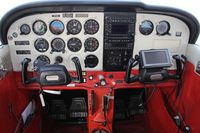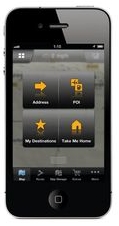 This story comes from Chip, a pilot who recently upgraded the panel in his Cessna 172. The plane was equipped with a Garmin GNS 430, a Garmin GMA 340 audio panel and a Garmin GTX 327 transponder. Chip said that this equipment has worked perfectly for him for 11 years, but that he decided now was the time to upgrade to glass. He got rid of his 6-pack and replaced it with a Garmin G500 glass flight display with Synthetic Vision Technology (SVT). “The synthetic vision is great, and neat, and it’s on the money when you are approaching the runway,” he said. He also loves the georeferenced approach charts on the G500. But Chip didn’t stop there. He upgraded his GNS 430, transponder and audio panel to the all-new GTN 750 touchscreen avionics with remote transponder and remote audio processor. “The products are amazing and very user friendly,” he said. “I think Garmin has an outstanding product…and Garmin’s tech support worked well with our installer with any technical issues that we encountered.” The custom installation was completed by HTS Avionics out of Martin State Airport.
This story comes from Chip, a pilot who recently upgraded the panel in his Cessna 172. The plane was equipped with a Garmin GNS 430, a Garmin GMA 340 audio panel and a Garmin GTX 327 transponder. Chip said that this equipment has worked perfectly for him for 11 years, but that he decided now was the time to upgrade to glass. He got rid of his 6-pack and replaced it with a Garmin G500 glass flight display with Synthetic Vision Technology (SVT). “The synthetic vision is great, and neat, and it’s on the money when you are approaching the runway,” he said. He also loves the georeferenced approach charts on the G500. But Chip didn’t stop there. He upgraded his GNS 430, transponder and audio panel to the all-new GTN 750 touchscreen avionics with remote transponder and remote audio processor. “The products are amazing and very user friendly,” he said. “I think Garmin has an outstanding product…and Garmin’s tech support worked well with our installer with any technical issues that we encountered.” The custom installation was completed by HTS Avionics out of Martin State Airport.
Check out these “before” and “after” photos! We love to see the transformation that takes place in a panel when it’s converted from steam gagues to glass, and we want to see your panel transformation, too. Submit your photos online or post them to our Facebook page! And to check out photos of other Garmin-equipped aircraft, visit our photo gallery.
